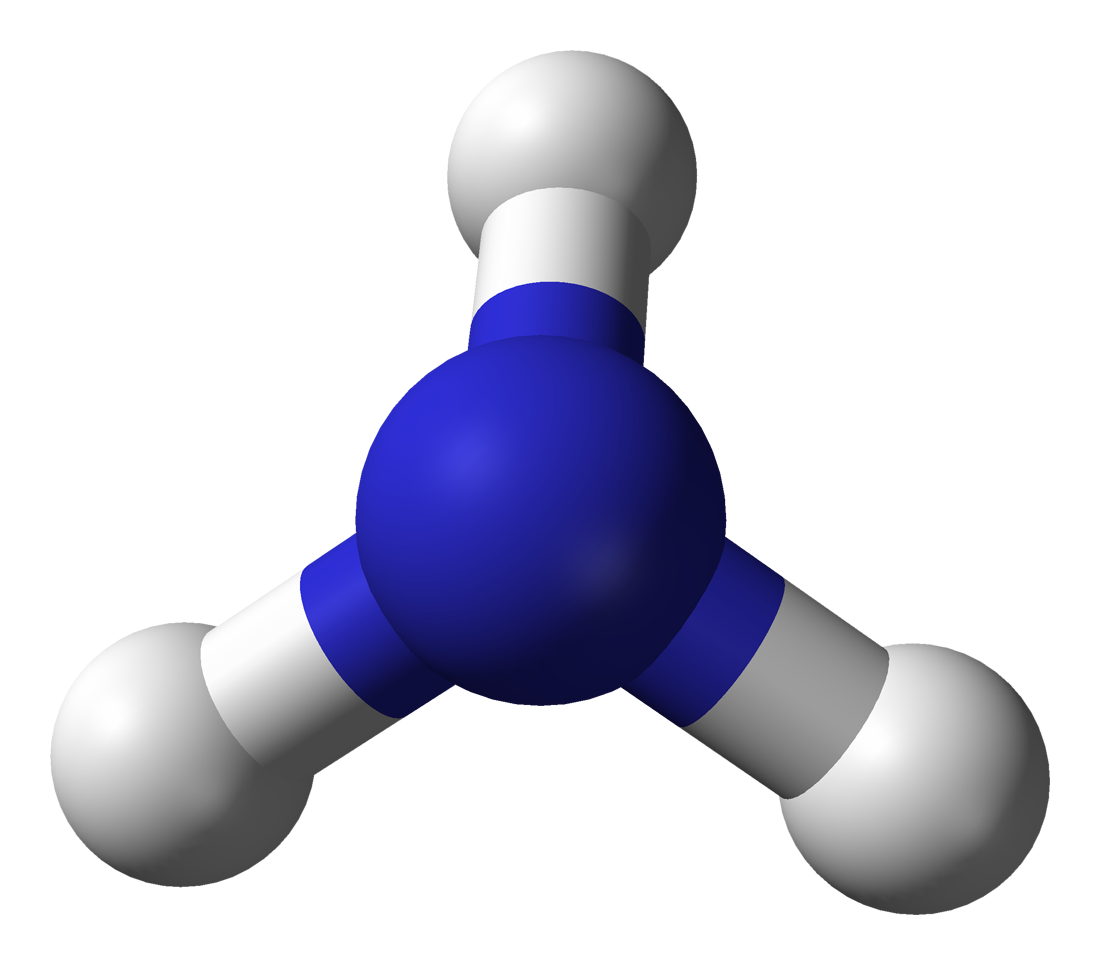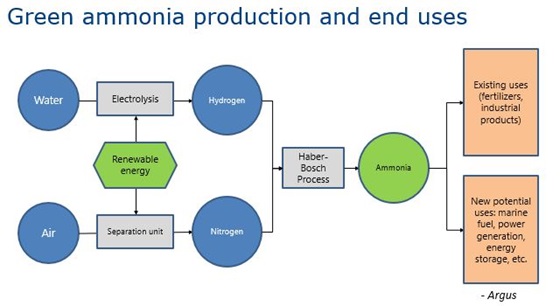Is “Green Ammonia” the future of energy? Maybe yes, but with caution …


“Green ammonia” is a little known fuel, destined to become one of the main renewable fuels in the coming decades. It has nine times the energy of lithium-ion batteries, and its denser nature makes it easier to transport than liquid hydrogen. As oil majors compete to find innovative alternatives to renewable energy, green ammonia is gaining more and more international attention for its potential as an emission-free fuel. Although little discussed compared to hydrogen, ammonia is attracting the attention of energy companies around the world for its potential as a clean fuel.

Ammonia is a compound of hydrogen and nitrogen that can be used as a fuel. Just like hydrogen, there are different types of ammonia, depending on the energy used for its production.
“Green” ammonia is such because it is produced using wind, solar or hydroelectric energy. This energy drives an electrolyser which in turn extracts hydrogen from the water while nitrogen is separated from the air with specific separation units. Green ammonia production is nothing new, but recent technological innovations have facilitated its production, making energy companies more inclined to invest in this energy source.

Ammonia has three hydrogen atoms unbound to oxygen. A fuel cell can use them to combine them with oxygen to obtain energy. However, it is then necessary to use catalytic processes to break down the NOx compounds, otherwise harmful.
One of the industries that is considering the use of ammonia for decarbonisation is the maritime sector , which could use the fuel to help achieve climate goals. Ammonia could also be used as a means of storing renewable energy for deferred use, as well as being transported to be cracked for its hydrogen content.
Ammonia is now being produced and shipped around the world as companies recognize its potential. Last month, the Abu Dhabi National Oil Company (ADNOC) sold ammonia , made from natural gas, to the Japanese oil company Inpex, so not exactly green. Ammonia was considered “clean ammonia” as the CO2 emitted during production was sequestered with carbon capture and storage (CCS) technology, to be injected into Abu Dhabi's onshore oil fields.
This is the first time that renewable fuel has been transported between the Middle East and Japan, thanks to the link between the regions of IHI Corporation and Mitsui OSK Lines (MOL). INPEX hopes to implement three or more ammonia projects by the end of the decade to produce approximately 100,000 tons of hydrogen / ammonia annually to help achieve climate goals. It also hopes to create a resilient supply chain between Japan and Abu Dhabi, recognizing the emirate as a central business area.
Joel Moser, CEO of First Ammonia, believes that switching to green ammonia could help Europe reach around 30% of its carbon emissions reduction target by 2030 by serving as a carrier for hydrogen. . In addition to contributing to the decarbonisation of the European energy sector, if the region succeeds in developing a strong green ammonia industry it could quickly become a hub for the export of renewable fuel. There are currently around 270 marine ammonia terminals globally, including 30 in the European Union, which offer the potential to transport green ammonia for the fertilizer industry and other uses.
In Ireland, two groups – the Killybegs fishermen's organization and Sinbad Marine Services – recommend the construction of a floating offshore wind farm to produce green ammonia and hydrogen. They recently signed a memorandum of understanding with Swedish wind power company Hexicon for a 2 GW development, which would fuel operations of renewable fuel, for use in marine vessels, while the excess energy would go to the local grid. The involvement of fishermen in the project should help get it off the ground with little resistance from the local community.
Meanwhile, in Norway, ExxonMobil, Grieg Edge, North Ammonia and GreenH have signed a memorandum of understanding to conduct studies on the potential production and distribution of green hydrogen and ammonia as marine fuels. The operations will be based at ExxonMobil's Slagen terminal in Norway and will use the hydroelectric power produced at the terminal to power the production of approximately 20,000 metric tons of green hydrogen and 100,000 metric tons of green ammonia per year. Matt Duke, managing director of the Grieg Maritime Group, explained: “Slagen is an exceptionally suitable location for the production of green hydrogen.
However, ammonia, even “Green”, presents considerable problems: if released as a gaseous it is toxic, and is liquid at room temperature only with a pressure of at least eight atmospheres, which makes it usable, but with great caution. The unregulated combustion cycle produces dangerous NOx. So it is a future, but only if managed carefully, with new technologies and, above all, in connection with clean, renewable or nuclear energy sources. Otherwise it's worse than oil …

Thanks to our Telegram channel you can stay updated on the publication of new articles of Economic Scenarios.
Is the article "Green Ammonia" the future of energy? Maybe yes, but with caution… it comes from ScenariEconomici.it .
This is a machine translation of a post published on Scenari Economici at the URL https://scenarieconomici.it/lammoniaca-verde-e-il-futuro-dellenergia-forse-si-ma-con-cautela/ on Sun, 10 Jul 2022 10:38:09 +0000.
